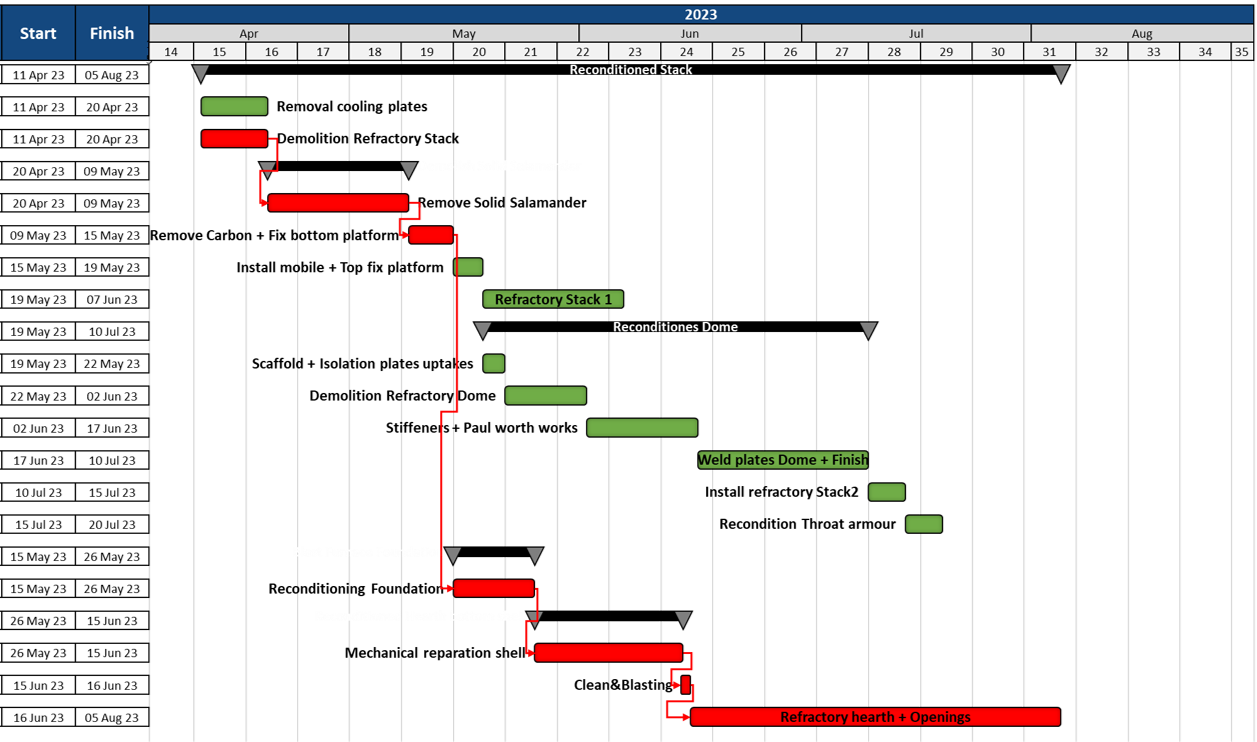Description
The As Planned vs. As-Built Windows Analysis method is a segmentation or window-based approach that offers some advantages over the Time Impact Analysis (TIA). This methodology is particularly useful when the quality of the baseline or updates is insufficient.
Similar to the APAB method, this approach involves comparing the actual execution dates with the planned ones, but with the added step of dividing the project into specific sections or windows. These windows are meticulously examined through a comprehensive review of contemporary programs, work records, and all available information to assess delay events and identify the critical path.
To determine the contemporaneous critical path for each window, an expert relies on their experience and the available information. Therefore, the reasoning process behind the critical path holds significant importance. The same steps used in the As Planned vs. As-Built method should be followed in this approach as well.
Each window’s delay is evaluated by comparing key milestones or dates between the contemporary schedule and the baseline. Subsequently, the events responsible for causing the delay are identified, along with their respective accountable parties.
One major advantage of conducting the analysis in several time periods is the enhanced precision in identifying delays or accelerations. The selection of window divisions should be based on relevant milestones or critical changes in the project’s development.
By applying the As Planned vs. As-Built Windows Analysis method, project analysts can gain a deeper understanding of project performance and ascertain more accurate factors contributing to delays or accelerations. This approach reduces the reliance on planning software, making it a valuable alternative when baseline quality is inadequate.
Strengths of the As Planned vs. As-Built Windows Analysis
- Time periods: The advantage of conducting the analysis across multiple time periods lies in its ability to offer a more precise and comprehensible identification of delays or accelerations.
- Cost-Effectiveness and Time Efficiency: This method is highly resource-efficient and can yield acceptable and defensible results in a relatively short timeframe. As-Planned vs. As-Built Windows Analysis does not require the use of planning software. This translates to cost savings and a reduced need for specialized expertise or software.
- Contemporaneous critical path: With enough data and contemporaneous information the analyst can find out the contemporaneous critical path for each window.
Weaknesses of the As Planned vs. As-Built Windows Analysis
- Unsuitability for Projects with subcritical paths: the method has certain limitations that make it unsuitable for projects with activities having little margin of delay (total float) or multiple subcritical paths.
- Concurrent Delays: Concurrent delays, where multiple delays occur simultaneously and impact the critical path, are not adequately addressed by the APAB method. This can lead to difficulties in accurately attributing responsibilities for delays and their effects on the project timeline.
- Subjectivity and Dependence on Analyst’s Experience: The reliability and accuracy of the APAB windows analysis heavily rely on the knowledge, experience, and judgment of the technician performing the analysis. The method lacks objective criteria, making it susceptible to potential biases and subjectivity in its interpretation.

